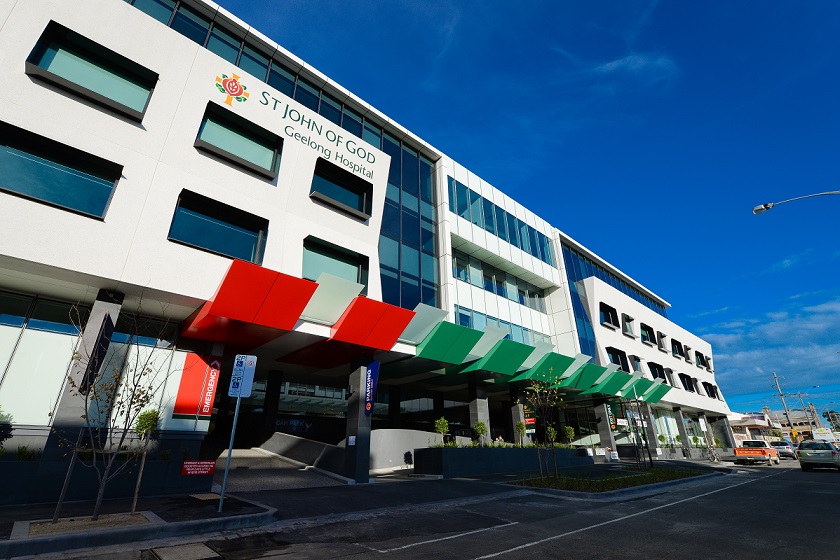Providing care in regions and in cities
1 Nov 2021

Almost one third of the organisation’s hospital beds are located in regional Australia, with those located in the regional Victorian towns of Ballarat, Bendigo and Geelong the largest in the Group outside of capital cities.
Over the past decade, St John of God Geelong Hospital has added 100 beds to the facility and almost doubled the number of caregivers employed.
It now features a busy emergency department, a critical care unit, and offers robotic surgery and a number of acute services, enabling the hospital to care for more patients closer to home.
Recently, the hospital responded to changing community expectations in offering low-cost maternity care options, and this year it became the first private hospital in regional Victoria to perform 1,000 robotic assisted surgeries.
St John of God Geelong Hospital Chief Executive Officer Stephen Roberts said this milestone highlighted the hospital’s commitment to ensuring it was able to grow and develop to meet the Geelong community’s needs.
“A part of responding to need is ensuring access to the latest technology and innovations close to home, as well as evolving our services profile to meet the changing expectations of our communities,” he said.
“It is not just about adding more beds or new facilities, it is making sure that our community knows that they will get safe and high quality care informed by the latest research and tools right here, where they live.”
Similar stories of growth and investment in services are told at Ballarat and Bendigo, which have grown in bed numbers, added surgical robots on site, and continued to evolve their services.
St John of God Health Care Group Chief Executive Officer Dr Shane Kelly said people living in regional communities should have the choice of where they want to receive high quality care close to home.
“We continue to look at different ways of servicing regional communities, and ensuring we continue to provide consumers with choice and good quality health care, which in turn can reduce pressure on regional public hospitals,” he said.
On the other side of the country, in regional WA, St John of God Geraldton Hospital is a picture of consistency.
The small 60-bed hospital continues to be integral to the community and throughout last year provided all the maternity care for people living in the Mid-West, as the public hospital transferred and merged its obstetric services, including midwives, to allow for capacity in case of a COVID-19 outbreak.
This meant the hospital was likely to care for higher risk pregnancies and very pre-term and unwell babies who await air transport to Perth. This resulted in the hospital looking to the wider group to upskill its workforce so it could provide this higher level of care.
The Advanced Neonatal Resuscitation training provided onsite education for the maternity team, and other caregivers, who work together to support mums and babies at the hospital.
St John of God Subiaco Hospital Specialist Neonatologist Dr Jo Colvin and Clinical Midwife Felicity Anderson travelled to Geraldton to provide the training and upskilling of their regional colleagues.
St John of God Geraldton Acting Chief Executive Officer Jack Harding said midwives and nurses, as well as obstetricians and other specialists, working in regional areas needed to be highly skilled.
“Working in small, regional hospitals means our caregivers need to be highly skilled and well trained so they can provide the appropriate care in a range of situations that they could encounter as members of smaller teams,” he said.
“This training was a great opportunity to provide the knowledge and hands-on skills needed at once to all those involved in caring for premature babies and their mothers.”
This has demonstrated the benefits for the regional hospitals in being a part of the wider St John of God Health Care group in allowing them to access support, and, on the other side of the country, respond to growth.
“There is often a focus on services and care available at metropolitan hospitals, as naturally, that is where the majority of our population resides,” Dr Kelly said.
“Our regional communities deserve access to, and choice of, the hospital care they receive and we are proud that St John of God Health Care continues to be able to deliver that care, which has largely been made possible by all of our hospitals and services working closely together to respond to need.”
